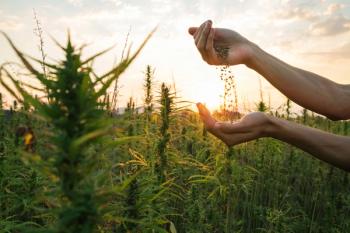
Ask the Experts: Cultivation, Part II: What Type of Cultivation Do You Find to be the Most Effective for Your Cannabis Plants?

What are the biggest challenges in cannabis cultivation? Our panel of experts discuss indoor versus outdoor; the reasons why one is preferred over the other; and how the outcome influences the properties of the plant itself.
Leading cultivators and researchers from the cannabis industry-Zac Hildenbrand, Inform Environmental, LLC; Karan Kapoor, Avana Canada Inc.; Autumn Karcey, Cultivo, Inc.; and Roger Kern, Agate Biosciences-participate in this round-table discussion series on cultivation. This month they discuss the biggest challenges in cannabis cultivation.
What type of cultivation (greenhouse, outdoor, controlled-environment agriculture) do you find the most effective for your plants?
Zac Hildenbrand: Each of these different modalities has their merits. For example, indoor cultivation allows for control of the environmental conditions as well as the use of advanced lighting technologies (such as light-emitting diodes [LEDs]) that produce a better yield than sunlight). Alternatively, outdoor cultivation costs less and generally allows one to grow more plants, albeit under the mercy of outdoor conditions. Greenhouse cultivation is somewhat of a happy medium, providing growers with the best of both worlds.
Karan Kapoor: I would put them in this order:
a. Indoor will give you a consistent product.
b. Greenhouse (greenhouse will be more exposed to variation in growth factors compared to indoor but better than outdoor).
c. Outdoor (no control on the growth atmosphere).
Autumn Karcey: Depending on what the end goal of production is, I would say that all forms of cultivation listed have a place in the industry for different reasons. From a cultivation standpoint, it all starts with location, location, location. Many climates even if they are “zoned correctly” may not be optimal for greenhouse or outdoor production for a myriad of reasons. I try to encourage anyone, before investing in property either for greenhouse or outdoor production, perform the proper due diligence necessary on the land. This includes soil tests, water tests, and weather reports. They should also take into account things like pesticide drift from neighboring farms.
I always say the difference between indoor and greenhouse or outdoor cultivation is that, with indoor cultivation, “you’re playing God,” meaning you should have 100% control over your environmental parameters. With outdoor cultivation, “you’re at the mercy of the environment around you”-you will have to learn to adapt on the fly to any uforeseen and unanticipated circumstances.
For companies developing medical products, I feel that the research and development of understanding certain cultivars would benefit from the consistency and quality that comes with indoor cultivation. On the contrary, if a company is concerned with the lowest cost of goods sold, cultivating outdoors in an optimal environment may be the way to go. Greenhouse is a hybrid of both indoor and outdoor philosophies where you have much more environmental control than outdoor. With the use of supplemental lighting and blackout curtains often times you are able to produce year round. However, the efficiency of a greenhouse is still determined by the environment in which it sits.
Roger Kern: Again, it depends. For a medical or top-shelf recreational flower, I like indoor because at every moment you can control and optimize all the environmental variables: temperature, humidity, and lighting (intensity and spectrum). If you’re interested in producing flower for oil production, then I think the greenhouse is the best option because of energy considerations. Sunlight is free, almost-there are always temperature-control issues.
Look for part III of "Ask the Experts: Cultivation" in our October 2019 newsletter. Part III of our analytical methods/cannabis testing series will appear in August and Part III of the series on extraction will appear in September.
Disclosures:
References:
Newsletter
Unlock the latest breakthroughs in cannabis science—subscribe now to get expert insights, research, and industry updates delivered to your inbox.



